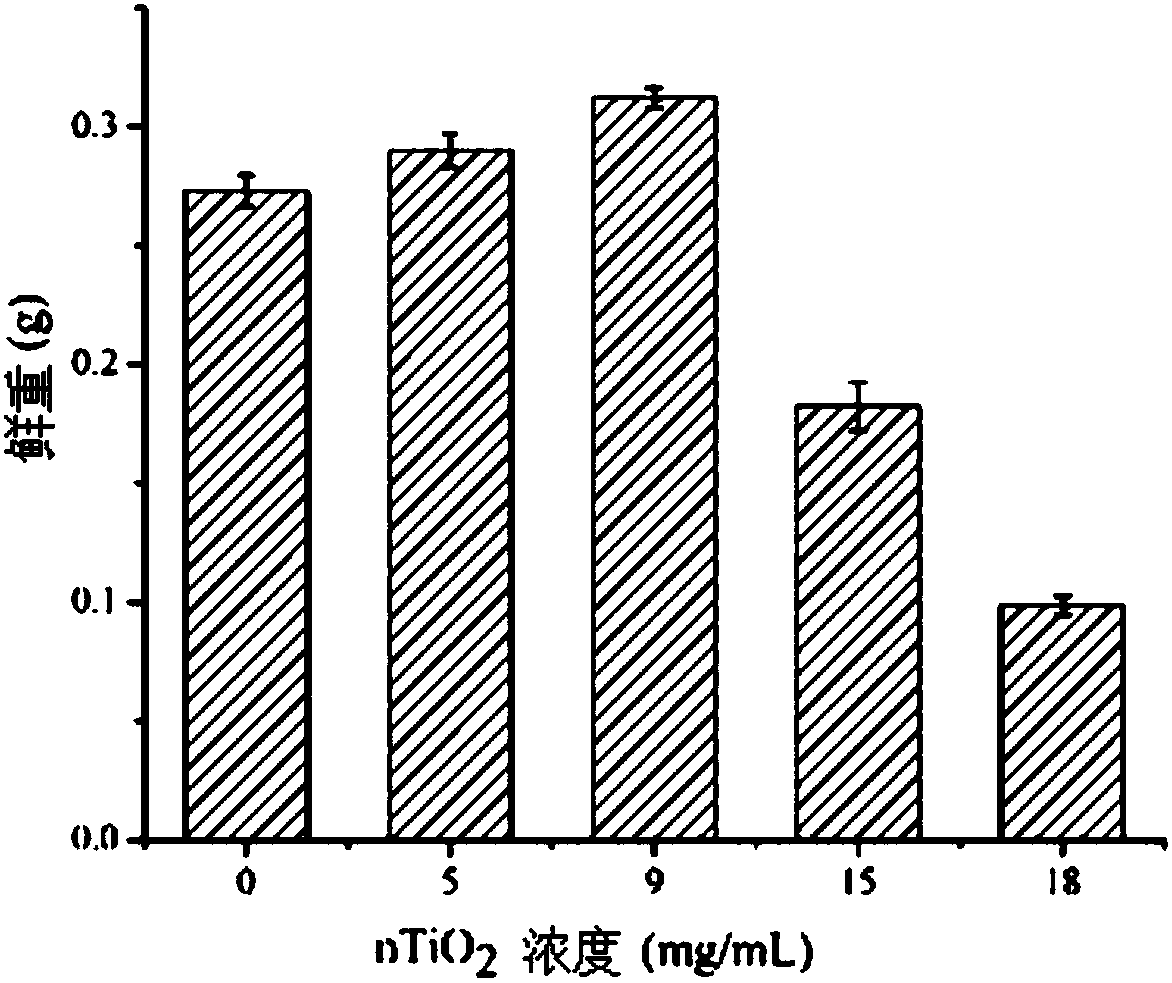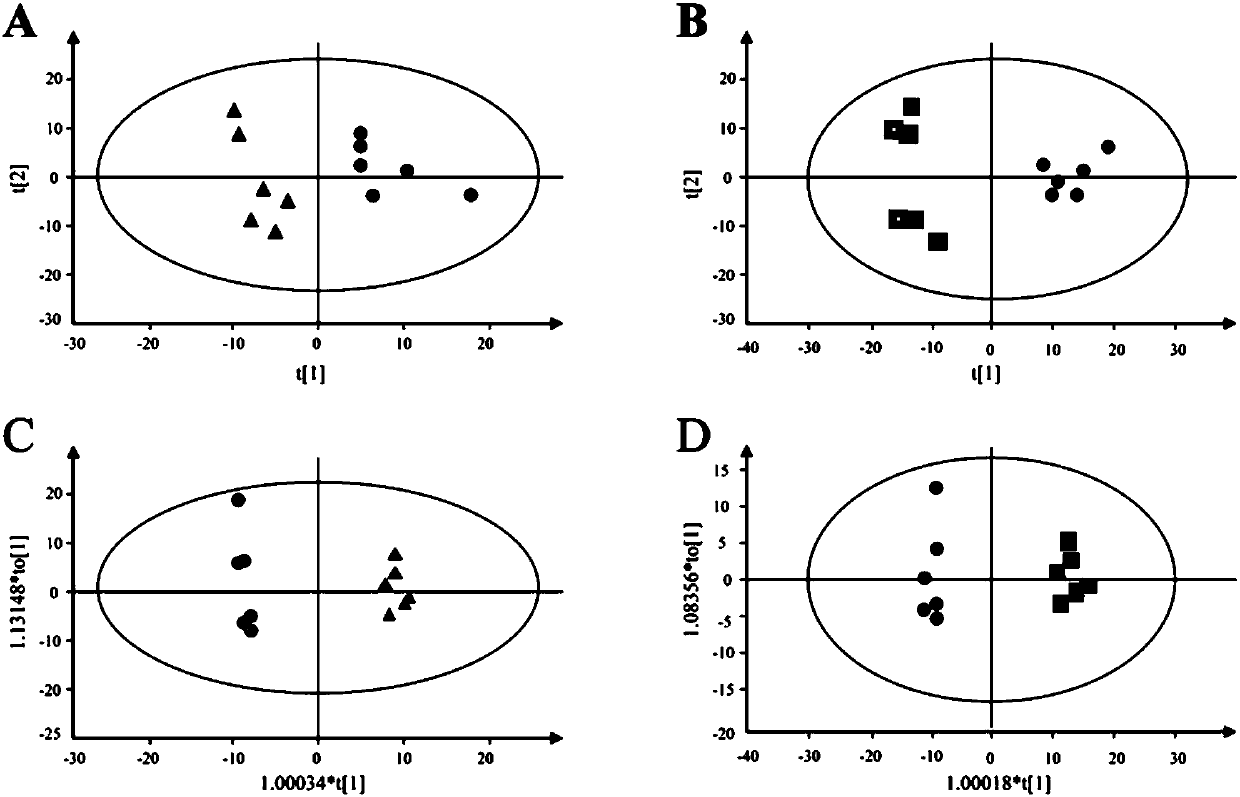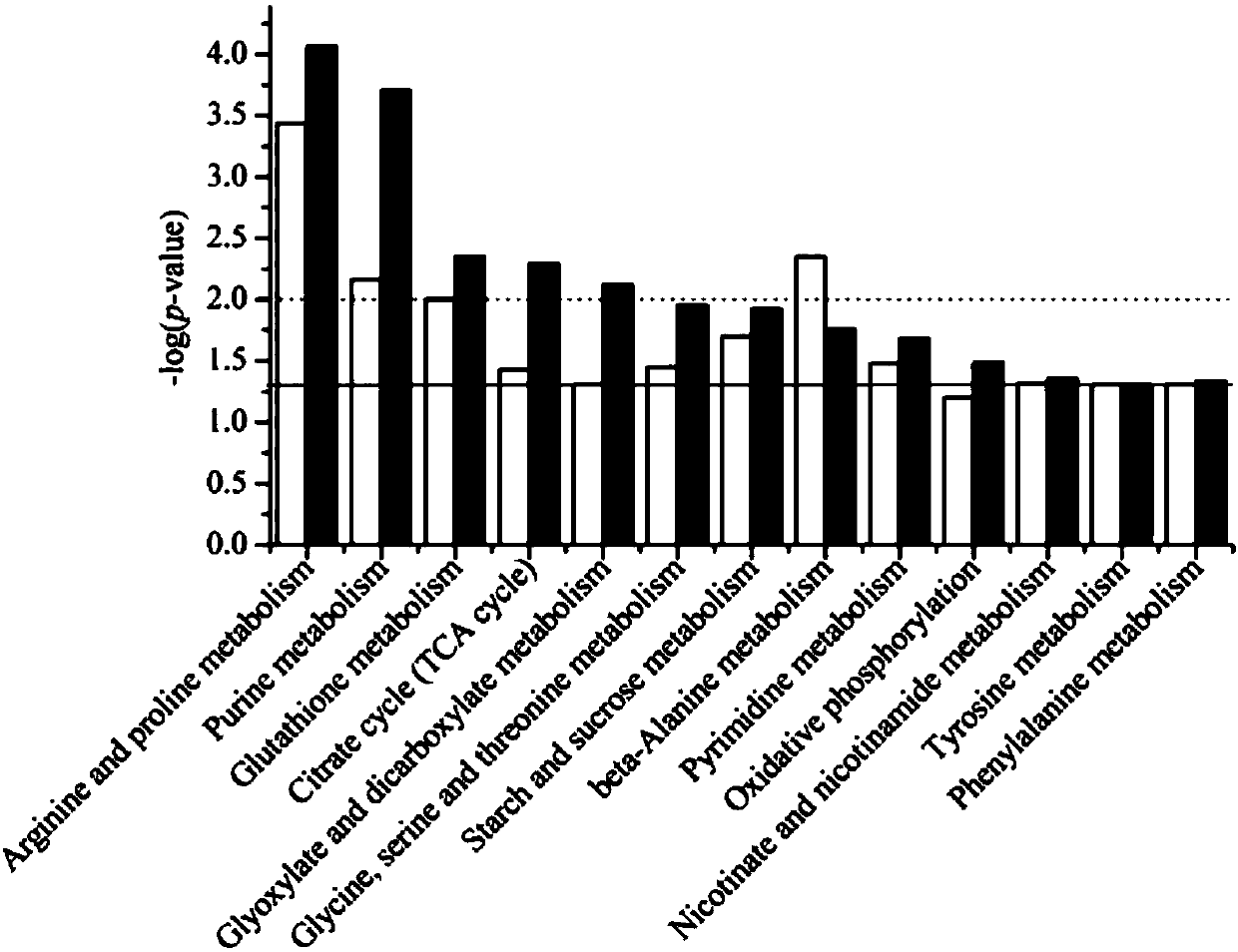Application of metabolite of physarum polycephalum used as biomarker
A technology of Phytophthora polycephalus and biomarkers, which is applied in the field of biochemistry and can solve the problems of limited detection methods of nTiO2
- Summary
- Abstract
- Description
- Claims
- Application Information
AI Technical Summary
Problems solved by technology
Method used
Image
Examples
Embodiment 1
[0058] TiO 2 Effects on the growth of Physarum polycephalum
[0059] In the absence of photocatalysis, nTiO 2Considered a biocompatible material. In this example, Physophora polycereus was exposed to increasing concentrations of nTiO-containing 2 (0mg / ml, 5mg / ml, 9mg / ml, 15mg / ml and 18mg / ml) in the solid culture medium three days, the weight of each group of Chrysomyces polycephalum is weighed; The result is as follows figure 1 Shown: Compared with the control group, the growth rate of Phymophora polycephalum was slightly increased (about 10% and 20%) in the concentrations of 5 mg / ml and 9 mg / ml; compared with the control group, higher concentrations of nTiO 2 (15mg / ml) significantly inhibited growth (about 50%), 18mg / ml of nTiO 2 Almost completely inhibits the growth of Physarum polycephalum.
Embodiment 2
[0061] TiO 2 Induction of Metabolic Disorders in Phymophthora polycephalum
[0062] Semiquantitative analysis of metabolite levels in Chrysophora polycephalum samples by GC / MS and multivariate statistical analysis including unsupervised principal component analysis (PCA) and supervised orthogonal partial least squares discriminant analysis (OPLS-DA) Evaluate the resolved peaks. PCA score plot ( figure 2 A) and OPLS-DA score chart ( figure 2 C) shows the control group and 9mg / ml nTiO 2 Significant differences in treatment groups. Each part of the OPLS-DA model explained the difference changes as X matrix (metabolite data) 61%, Y matrix (nTiO 2 Treatment group: 1, Control: 0) 99.7%, due to the cumulative Q of the prediction accuracy of the OPLS-DAY model matrix 2 was 91.6%, indicating a very significant difference between groups in multivariate analysis. Similarly, the PCA score plot ( figure 2 B) and OPLS-DA score map ( figure 2 D) shows the control and 15mg / ml nTi...
Embodiment 3
[0070] Physophora polycereus was nTiO 2 induced biochemical changes
[0071] High ROS levels can induce oxidative damage to biomacromolecules, so ROS levels can be used as indicators of oxidative stress. H can be used 2 DCFDA probe detects ROS levels to determine nTiO 2 Is it possible to increase ROS levels in Phymophora polycephalum under dark conditions. Such as Figure 5 Shown in A: the control group was exposed to nTiO after a brief exposure (100 min) whose ROS levels fluctuated within a relatively narrow range (0.8-1.2 times the initial value). 2 (9mg / ml and 15mg / ml), the ROS levels of Phymophora polycephalum increased rapidly after exposure, and reached the peak rapidly (2.2 times and 3 times, respectively). Although the ROS level decreased after reaching the peak, it was still higher than that of the control group, indicating that nTiO 2 Under dark conditions, an imbalance in the ROS levels of Phymophora polycephalum was induced.
[0072] 8-OHdG is one of the mai...
PUM
 Login to View More
Login to View More Abstract
Description
Claims
Application Information
 Login to View More
Login to View More - R&D
- Intellectual Property
- Life Sciences
- Materials
- Tech Scout
- Unparalleled Data Quality
- Higher Quality Content
- 60% Fewer Hallucinations
Browse by: Latest US Patents, China's latest patents, Technical Efficacy Thesaurus, Application Domain, Technology Topic, Popular Technical Reports.
© 2025 PatSnap. All rights reserved.Legal|Privacy policy|Modern Slavery Act Transparency Statement|Sitemap|About US| Contact US: help@patsnap.com



